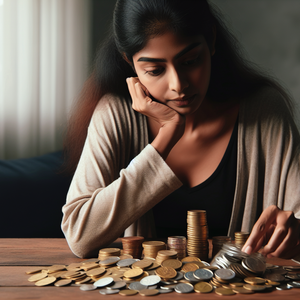Uncharted Territories in Science Communication: Bridging the Gap Between Science and Society

Science communication serves as a vital link between researchers and society. It enhances public understanding of significant issues like climate change, healthcare, and technological advancements. When the public is well-informed, they are better equipped to make decisions that impact their lives and communities. Unfortunately, many scientists lack the training or motivation to communicate effectively, presenting both a challenge and an opportunity. Those willing to engage in science communication can help bridge this gap, making science more accessible and relevant to everyday life.
Innovative Opportunities in Science Communication
1. Science Journalism Science journalism has emerged as a formidable means of disseminating knowledge. Journalists with a background in science can distill complex information and present it in relatable formats. For instance, Dr. David Quammen, an acclaimed author and journalist, has effectively combined storytelling with scientific rigor. His works on evolution and ecology have not only educated the public but have also sparked interest in scientific inquiry. By transitioning into journalism, scientists can contribute to a more informed society, making research comprehensible to a broader audience. 2. Podcasting The explosion of podcasting has created new opportunities for scientists to share their research and insights. This medium allows for deep dives into various subjects, offering a platform for nuanced discussions. A notable example is the podcast "Science Vs," which contrasts scientific facts with popular fads, providing listeners with evidence-based insights. Scientists can utilize this format to engage audiences in an informal yet informative manner, humanizing their research and fostering curiosity. By narrating their experiences and findings, they can cultivate a connection that invites public engagement. 3. Social Media Influencing Social media has revolutionized information dissemination, enabling scientists to reach vast audiences creatively. Platforms like Twitter, Instagram, and TikTok allow scientists to share bite-sized insights and engage in discussions. Dr. Sarah Richardson, a molecular biologist, has harnessed Twitter to share her research in accessible terms, sparking dialogues around scientific topics. By adopting a conversational tone, she not only educates but also encourages her followers to engage critically with scientific issues. This approach exemplifies how social media can serve as a powerful tool for science communication.
Success Stories of Scientists in Communication
Several scientists have successfully carved out communication roles, exemplifying the diverse pathways available in this field. Dr. Neil deGrasse Tyson, an astrophysicist, has become a prominent figure through his engaging presentations, bestselling books, and television appearances. His talent for simplifying complex scientific principles has inspired millions to appreciate the wonders of science and astronomy. Similarly, Dr. Emily Calandrelli, a science communicator and host of the Netflix show "Emily's Wonder Lab," has made significant strides in making science engaging for children. By presenting scientific concepts in fun and relatable ways, she nurtures a love for learning among the next generation. These examples highlight that scientists can play a crucial role not only in research but also in inspiring and educating the public.
The evolving field of science communication presents a unique opportunity for scientists to bridge the gap between their research and society. By engaging in science journalism, podcasting, and social media, scientists can demystify complex concepts and inspire curiosity across diverse audiences. Success stories from those who have embraced these roles serve as powerful reminders of the importance of effective communication in today's world. As we confront significant global challenges, the ability to convey scientific knowledge in an accessible manner becomes increasingly vital for fostering a well-informed public. Scientists possess the potential to engage, educate, and inspire; it is time for them to venture into these uncharted territories of communication and make a lasting impact on society.
Science Journalist
National Geographic, Scientific American, The New York Times
Core Responsibilities
Write and produce articles that translate complex scientific research into understandable narratives for the general public.
Conduct interviews with scientists and experts to gather insights and perspectives on current scientific issues.
Stay updated on the latest developments in science and technology to inform reporting.
Required Skills
Strong background in science, preferably with a degree in a scientific field or science communication.
Excellent writing and storytelling skills, with the ability to convey technical concepts in layman's terms.
Familiarity with various media platforms, including print, online, and broadcasting.
Science Podcaster
Independent creators, educational institutions, science-focused media companies, NPR
Core Responsibilities
Develop, record, and edit podcast episodes that explore scientific topics in depth.
Create engaging content that combines narratives, interviews, and audio storytelling techniques.
Promote podcasts through social media and other platforms to grow audience engagement.
Required Skills
Strong verbal communication skills and a passion for storytelling.
Proficiency in audio editing software and familiarity with podcast production.
Ability to research and present scientific topics accurately and engagingly.
Science Communication Specialist
Universities, research institutions, non-profit organizations, government agencies
Core Responsibilities
Develop and implement communication strategies to engage various stakeholders, including the public, policymakers, and funding bodies.
Create educational materials, workshops, and public engagement activities to promote scientific understanding.
Collaborate with researchers to help them effectively communicate their findings to non-expert audiences.
Required Skills
Background in science, education, or communication, often requiring a master's degree in science communication or a related field.
Strong interpersonal and presentation skills, with experience in public speaking and educational outreach.
Familiarity with digital communication tools and platforms.
Social Media Science Influencer
Freelance, independent brands, educational institutions, scientific organizations
Core Responsibilities
Create and share engaging content related to scientific research, discoveries, and educational topics across social media platforms.
Foster community engagement by responding to queries, encouraging discussions, and participating in science-related conversations.
Analyze engagement metrics to refine content strategy and improve outreach effectiveness.
Required Skills
Strong understanding of social media platforms and trends, along with an ability to create visually appealing content.
Background in a scientific discipline or an ability to accurately interpret and communicate scientific information.
Creativity and adaptability in digital content creation and storytelling.
Public Engagement Coordinator for Science
Science museums, educational institutions, non-profit organizations, governmental science agencies
Core Responsibilities
Design and facilitate programs that connect scientists with the public, including workshops, lectures, and interactive exhibits.
Collaborate with community organizations to promote science literacy and engagement across diverse populations.
Evaluate the effectiveness of public engagement initiatives and adjust strategies accordingly.
Required Skills
Experience in community outreach, event planning, or science education, often requiring a background in science communication.
Strong organizational and project management skills, with the ability to work collaboratively with diverse teams.
Excellent communication and public speaking skills to engage various audiences effectively.


